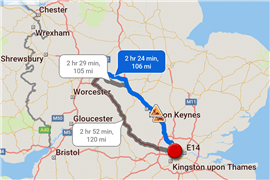Real life emissions testing
11 June 2008
The European Commission is researching ways of measuring engine emissions from construction machines under real-life conditions, rather than relying on laboratory tests. CECE reports.
Regular readers of CE will no-doubt be aware of the diesel engine exhaust emission laws that have come into force in Europe over the last decade or so. Introduced in a succession of Stages, these laws have seen the permissible levels of pollutants in an engine's exhaust gasses progressively reduced.
Stage IIIA limits are now in place for the non-road mobile equipment used in the construction industry, and the future Stage IIIB and Stage IV laws will see further reductions in emissions of particulate matter (PM) and oxides of nitrogen (NOx).
Compliance with these laws is established with laboratory test, where emissions are measured during a specifically defined test cycle. Results from the engine test cell are then analysed to give emissions levels as defined by the Directive. While this has provided a good framework for the legislation, there is obviously a difference between how an engine is run under test conditions, and how it is run in ‘real life' situations.
The emissions from an engine installed in a construction machine will depend on a variety of factors. The application and machine type play a big part by dictating the engine's duty cycle, but in addition issues such as temperature, pressure, humidity and ho well the engine is maintained also have a bearing.
This s recognized in the current version of the engine emission directive (2004/26/EC), which says in article 2(h), "The Commission shall... assess the need for a system for ‘in-use compliance' and examine possible options for its implementation."
As the phrase suggests ‘in-use compliance' is an assurance by the manufacturer that emission levels from the machine stay below a certain level when it is in service under all normal ambient and geographic conditions and usage patterns.
This task of working out how to do this is being undertaken by the Commission's Joint Research Council (JRC), which is looking into Portable Emissions Measurement Systems (PEMS) as a possible solution to the question of in-use compliance. These are devices that provide real-time and real-world emissions monitoring under real-life working conditions.
The parameters measured by PEMS are:
- Emissions - CO, CO2, NOx, and volatile hydrocarbons (THC)
- Engine parameters - torque, speed, temperatures
- Vehicle position and ground speed
- Environmental conditions - temperature, humidity and atmospheric pressure
The current thrust of the JRC project is to study the feasibility of PEMS testing, particularly with regard to the different ways PEMS equipment might be installed and its own robustness in ‘real life' applications. The second area is to define testing procedures and evaluation methods.
The general aim with PEMS is to develop testing devices that are small, lightweight and easy to install. Low power consumption is also a priority, because it is expected that ‘real life' tests will have to last for several hours to produce meaningful results, so devices that could run from batteries or small gensets would be ideal.
Finally, PEMS systems will have to include some sort of recording device or data logger that would also gather data from any on-board computer systems such as engine management computers and GPS tracking devices. Since weather conditions play a part in engine performance, these systems would also need to record external factors such as ambient temperature and atmospheric pressure.
Timescales for this project are yet to be finalised. The current activity centres on establishing testing procedures. A preliminary test protocol has been established and it is expected to take at least 18 months before this is developed into the ‘final' protocol. Following that, it is expected that a number of pilot programmes with various manufacturers and types of equipment will be launched.
The JRC expects to report back to stakeholders at least twice a year, and it is also keen for equipment manufacturers to get involved in the project from an early stage.







